








6 keys to implement your inbound marketing strategy

We all know that healthcare marketing is a fundamental pillar for attracting patients, retaining clients, and positioning a clinic or medical service.
In this context, there are a series of strategies to implement, including inbound marketing, which emerges as a key tool to boost sales and establish lasting relationships with patients.
But how to design and implement that strategy?
Okay, here we lend a hand with the steps that our team considers essential in any digital marketing strategy for the medical sector.
How does inbound marketing help boost sales in the medical sector?
Inbound marketing differs from traditional marketing due to its non-intrusive approach and its focus on attracting potential patients in a natural and relevant way.
In this sense, this methodology can become a powerful ally to boost your sales by creating a conducive environment for informed decision-making and building trust.
If you want to grasp the advantages it offers, here they are:
- You can attract new patients in a non-intrusive way, building trust through relevant and educational content.
- It allows you to personalize communication and tailor the message to the specific needs of each patient.
- It is key to building long-term relationships by focusing on the patient's experience and well-being.
- It helps optimize the decision-making process by providing useful and transparent information.
- Boosts efficiency through automation, enabling more effective lead and patient management.
- Provides analytical data to continuously evaluate and improve the strategy, adapting to changes in the market and patient preferences.

6 keys to your inbound marketing strategy
Now, let's get to it...
1. Define your buyer persona
The first key to an effective inbound marketing strategy is understanding who you are targeting.
Our basic glossary for understanding healthcare marketing defines the buyer persona as the "fictional representation of your ideal customer," based on real data, demographic characteristics, behaviors, motivations, and goals.
Your first task will be to understand the needs, desires, and challenges of your "buyer profile." This incredibly valuable information will be the basis for personalizing your approach and generating more relevant content.
2. Define the customer journey
In the medical field, the buying process is not limited to a simple transaction but involves decisions based on health and well-being.
For a patient, this process could begin with symptom identification, followed by online information search, consultation with healthcare professionals, consideration of treatment options, and finally, the decision to proceed with a specific medical service.
By understanding each stage of this journey, you can strategically tailor your content and approach to provide the right information at the right time.
You'd be surprised to know how many patients need guidance throughout their health decision-making.
3. Create relevant content focused on conversion
Content is the engine of inbound marketing.
Develop educational materials, testimonials, and success stories that address your patients' questions and concerns, ensuring each piece is designed to guide the patient through the conversion funnel.
4. Automate your marketing actions
In the field of medical marketing, automating actions is crucial for maintaining a consistent and efficient presence.
Some examples of how you can apply automation include:
- Automatic responses to inquiries with instant information about services, hours, and procedures.
- Scheduling social media posts, even though the community manager usually handles this.
- Email marketing sequences to nurture leads.
- Appointment reminders and post-consultation follow-ups.
- Automatic database segmentation.
Automation not only saves time but also ensures consistent and timely communication, enhancing the patient experience and optimizing marketing efforts.
5. Plan and execute
A well-planned strategy is the foundation of success.
Establish a detailed plan that includes the frequency and type of content to produce, the platforms to use, and the goals to achieve. Consistency in execution is key to building a strong digital presence.
In "How to Manage Your Clinic's Social Media If You Don't Have Time", we address the dilemma of "I want to do it, but my schedule is tight."
6. Analyze and apply continuous improvements
After implementing your inbound marketing strategy in the medical sector, it is crucial to conduct periodic analyses to evaluate its effectiveness and make continuous improvements.
Here are specific examples of actions you can take with your medical marketing team:
- Use analytical tools to track conversions, such as form submissions, appointment requests, or digital resource downloads.
- Conduct content analysis by evaluating the performance of your blogs, videos, infographics, and social media marketing.
- Analyze demographic data of your patients to better understand whom you are attracting.
- Collect and analyze direct feedback from patients. You can conduct surveys, monitor social media interactions, or request feedback after appointments.
- If you are running specific campaigns, evaluate their performance. Determine which ads, emails, or social media initiatives generate more interaction and conversions, and adjust your budget and strategy accordingly.
By applying these analyses and making continuous improvements, you constantly optimize your inbound marketing strategy to adapt to the changing needs of your audience and developments in the medical field.
If you advertise on social media, it's beneficial to read about how to get your patients to click on your ads.
Conclusion
Implementing an inbound marketing strategy in the medical sector not only boosts your sales but also strengthens the doctor-patient relationship.
By adopting these six keys, your clinic or medical service will be better positioned to stand out in a competitive digital environment, generating trust and long-term loyalty in your patients.
So, doc, don't underestimate the power of inbound marketing!
